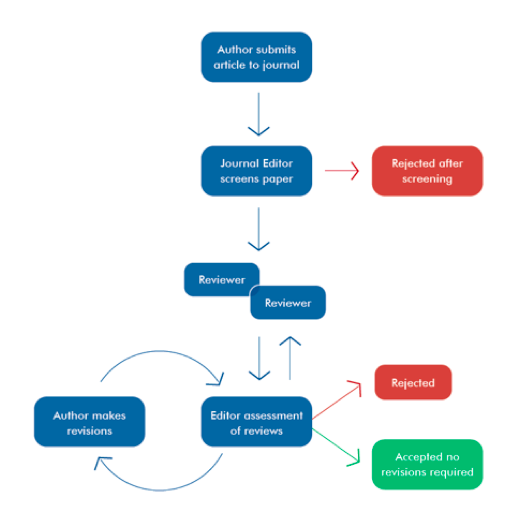Always wanted to know how RAMS is produced? Curious to know the process behind a scientific medical journal? Keep reading!
Our goal is to enthuse (bio)medical students of the Radboud University Nijmegen to participate in research during their studies and to give them an opportunity to publish an article. This is both a learning experience for the authors, as well as for the editors and reviewers, who are all (bio)medical students. We have got three editors-in-chief: the chair of the editorial board, the scientific editor-in-chief and the editorial editor-in-chief. Besides the editors-in-chief, regular editors contribute to the journal. These regular editors of RAMS are divided into scientific and editorial editors as well. The number of regular editors varies but usually lies around eight to ten editors. The scientific editors are involved in the submission and the peer review process of articles. When the scientific editor-in-chief receives a submission from a student, he will or won’t accept this article. If the scientific editor-in-chief considers the article suitable for our journal, he will send it to 3 reviewers, who all make an individual review report. A scientific editor then receives these review reports and makes a combined review report. This combined review report will be sent to the author by the scientific editor-in-chief, who can implement the feedback. We try to keep the quality of the review reports as high as possible by educating our reviewers and editors during annual masterclasses. The editorial editors write a diverse range of articles each edition, from perspectives to interviews. Most of the time they write together, which enhances the learning process. There is a lot of creative freedom in writing these articles. During the monthly editorial meetings, in which both the scientific and editorial editors participate, we discuss subjects the editorial editors could write about. The editors receive guidance and feedback from the editorial editor-in-chief. Besides from this guidance, the English grammar gets an extra check by English literature students. Moreover, editorial editors discuss their topic and show their article to a medical professional who knows a lot about this specific topic. This enhances the learning process for the editorial editors, as well as adding quality to the final product.
The editorial editors write a diverse range of articles each edition, from perspectives to interviews. Most of the time they write together, which enhances the learning process. There is a lot of creative freedom in writing these articles. During the monthly editorial meetings, in which both the scientific and editorial editors participate, we discuss subjects the editorial editors could write about. The editors receive guidance and feedback from the editorial editor-in-chief. Besides from this guidance, the English grammar gets an extra check by English literature students. Moreover, editorial editors discuss their topic and show their article to a medical professional who knows a lot about this specific topic. This enhances the learning process for the editorial editors, as well as adding quality to the final product.
The whole process of making the journal is monitored by the chair of the editorial board, who plans the editions and deadlines and chairs meetings. The chair of the editorial board is involved in all layers of the journal, which ensures a smooth production process. The chair keeps in close contact with the Chief Design and the photographers as well, who are involved in the layout of the final product.
Of course, apart from all the “serious business”, we have got a lot of fun with each other producing every edition of RAMS. Apart from the editorial meetings, we also organize more informal evenings where we can get to know each other better while enjoying a beer.
This story is just a brief summary of the Radboud Annals of Medical Students. Are you curious about all more there is about producing RAMS? Do you want to be involved with the journal and develop yourself? Don’t hesitate to send your application to voorzitter.rams@ru.nl .
I am hoping to meet you during the interviews!
Mirjam Schaap
Chair of the Editorial Board
